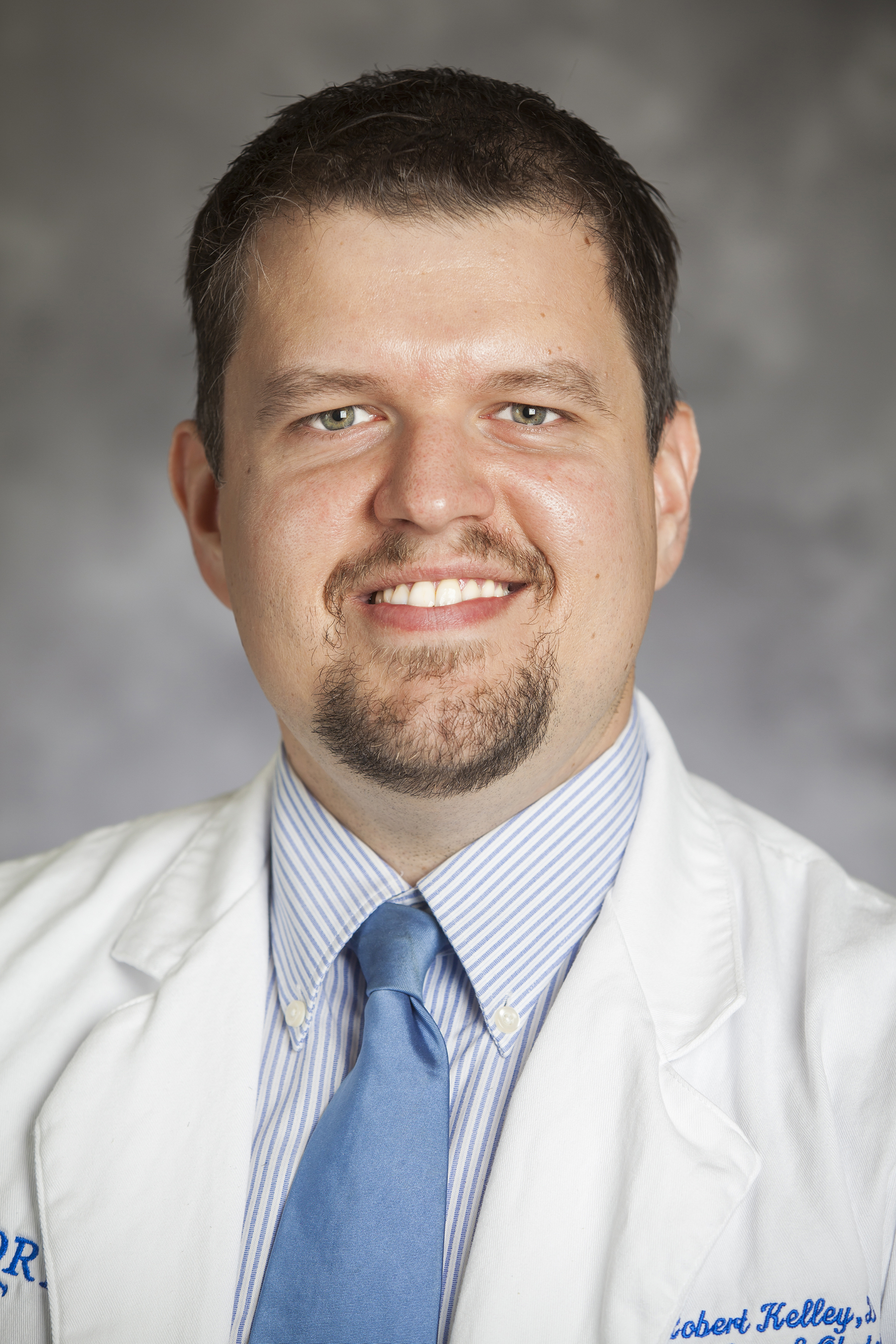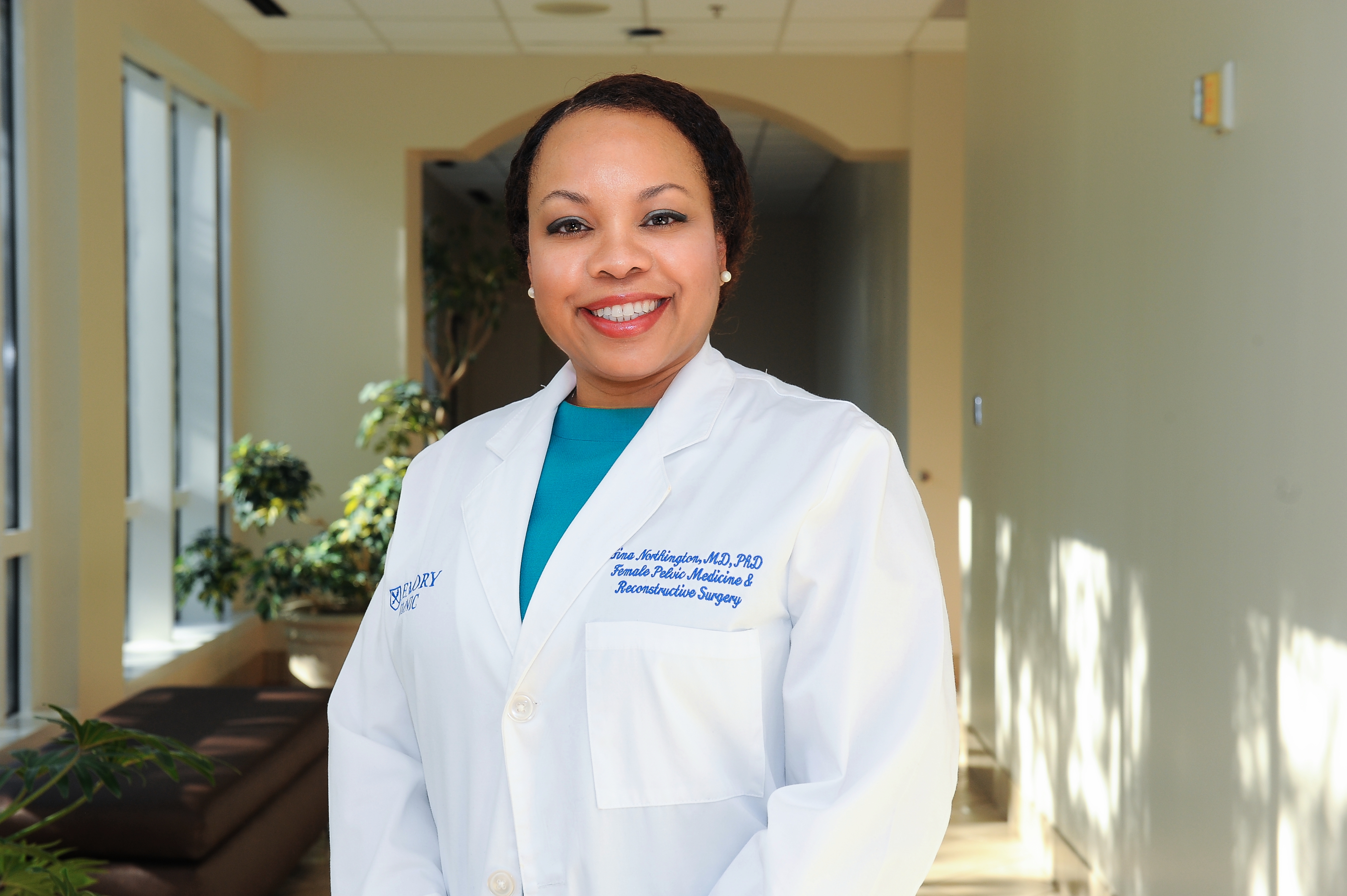Finding Answers for Incontinence
Emory urogynecologists partner with cardiology to find the heart of the matter behind incontinence and deliver effective treatments.

Urinary incontinence – the leakage of urine before getting to a bathroom – affects an estimated 15 million women in the United States. Incontinence can strike at any age: Women in their 20s, 30s and older have all admitted to experiencing a lack of bladder control at one point or another.
With urinary incontinence, even the simplest activities, like going to the grocery store or meeting friends for lunch, can become embarrassing, uncomfortable and uncertain. Women may find themselves asking, “Should I use the bathroom before I go out? Will there be a bathroom there? What if I can’t make it in time?”
Urinary incontinence has long been seen as a “normal” part of aging, or something that just “happens” after childbirth. Advances in urogynecology are offering new hope and options for women trying to cope with incontinence.
Challenging the status quo
Urogynecology is a relatively new subspecialty in obstetrics and gynecology that has pushed care and treatment for women suffering from pelvic floor disorders forward. These conditions are caused by weakening of the ligaments, connective tissue and muscles of the pelvis.
New treatments and therapies – from Botox injections to implantable devices; physical therapy to prescription medicine – are improving women’s lives and empowering them to live the active life they want.
One Emory Healthcare urogynecologist is taking the field even farther by looking for answers about incontinence in an unexpected place: the heart.
“The heart is a muscular, hollow organ that expands and contracts to move fluid. The bladder is a hollow organ that expands and contracts to move fluid – urine,” explains Robert Kelley, DO, MBA, urogynecologist at Emory Healthcare. “We know that there is electrical activity that helps control the heart rate. Our research is looking for the electrical activity that may be telling the bladder when and how to move urine through the bladder.”
Dr. Kelley is partnering with Michael Lloyd, MD, cardiac electrophysiologist at Emory Healthcare, to find answers to this question. Initially, they are studying the electrical activity of the bladder in women who have symptoms of urinary incontinence. Participants agree to an additional, minimally-invasive step at the end of a cystoscopy. Drs. Kelley and Lloyd then use a small catheter inserted into the urinary tract to measure electrical activity around the bladder.
“We are already finding some interesting data about the electrical activity in and around the bladder,” Dr. Kelley says. “Our next steps are to look at individuals with normal bladder activity, so we can compare and contrast our findings.
“Urogynecology is changing almost every year,” he continues. “Providers are trying to understand the cause of conditions we don’t yet completely understand – from vaginal prolapse, incontinence, and much more. With that knowledge we can develop treatments grounded in sound research that are safe, effective, have fewer side effects, and are less invasive.”

"Many of our patients don't see incontinence as a condition that they can talk to their doctor about. They're embarrassed," says Dr. Kelley. "Our research, advances in treatment and growing subspecialty are starting to change that and normalize the conversation, so patients do feel comfortable discussing this with their doctors."
Robert Kelley, DO, MBA
Finding answers through standardization, accreditation
The innovations, advancements and treatments available for women diagnosed with pelvic floor disorder have grown significantly, thanks largely in part to the growth of and commitment to urogynecology.
“There has been a phenomenal explosion of scientific discovery about women’s pelvic floor disorders,” explains Dr. Northington. “When I first started practicing gynecology, we didn’t have as many evidence-based guidelines that are available today. Instead, providers were often making decisions based on an individual’s experience.
“Now, we have the science, research and understanding to help women,” she continues. “And, we’re adding to that literature. We are innovating more. We are teaching medical students, and we’re standardizing our field. We’re taking what we learn and sharing it with women who want to maintain a high quality of life in their 60s, 70s – even 80s and 90s.”
Diversity, collaboration key to driving field forward
Dr. Lloyd, a cardiologist working closely with Dr. Kelley, acknowledges that Emory has a unique advantage when seeking answers to what may initially sound like an unusual question.
“If you ask any inventor, they will tell you the best ideas come from new or different perspectives,” Dr. Lloyd says. “It’s when a heart doctor and engineer or a heart doctor and gynecologist come together and ask a question to share best practices and discover how we can apply procedures, equipment and approaches from one field to advance another.”
Those different perspectives are also fostered within the urogynecology department at Emory Healthcare.
“Our team includes four providers, three fellows and two nurses,” explains Gina Northington, MD, Ph.D., Division Director of Female Pelvic Medicine and Reconstructive Surgery and Chief of Gynecology at Emory University Hospital. “We are a diverse group of providers from different backgrounds, ethnicities and training programs. We each have a unique perspective and work to bring it together to provide outstanding care for our patients.”
Compassionate, understanding care

"There has been a phenomenal explosion of scientific discovery about women's pelvic floor disorders."
Gina Northington, MD, PhD
Every advance, discussion and research project leads to one goal: delivering compassionate, understanding care for women suffering from incontinence and other pelvic floor disorders.
“Many of our patients don’t see incontinence as a condition that they can talk to their doctor about. They’re embarrassed,” says Dr. Kelley. “Our research, advances in treatment and growing subspecialty are starting to change that and normalize the conversation, so patients do feel comfortable discussing this with their doctors.”
Dr. Northington seconds Dr. Kelley’s statement. “There are a variety of good treatments for various types of incontinence, which can dramatically improve women’s quality of life. Incontinence is not just a normal part of aging, and we can help,” she says.
The female pelvic medicine and reconstructive surgery division at Emory provides a complete range of urogynecology services, including comprehensive evaluations and treatment options ranging from non-surgical to minimally-invasive procedures to complex surgeries to help women manage a wide range of conditions. You can learn more about our services by calling us today at 404-778-3401.
For more information on our research or to support the effort with contributions both large and small contact Dr. Kelley at robert.kelley@emory.edu or Jeff Verner, our Director of Development for philanthropic contributions to Gynecology and Obstetrics at jeff. verner@emory.edu.




